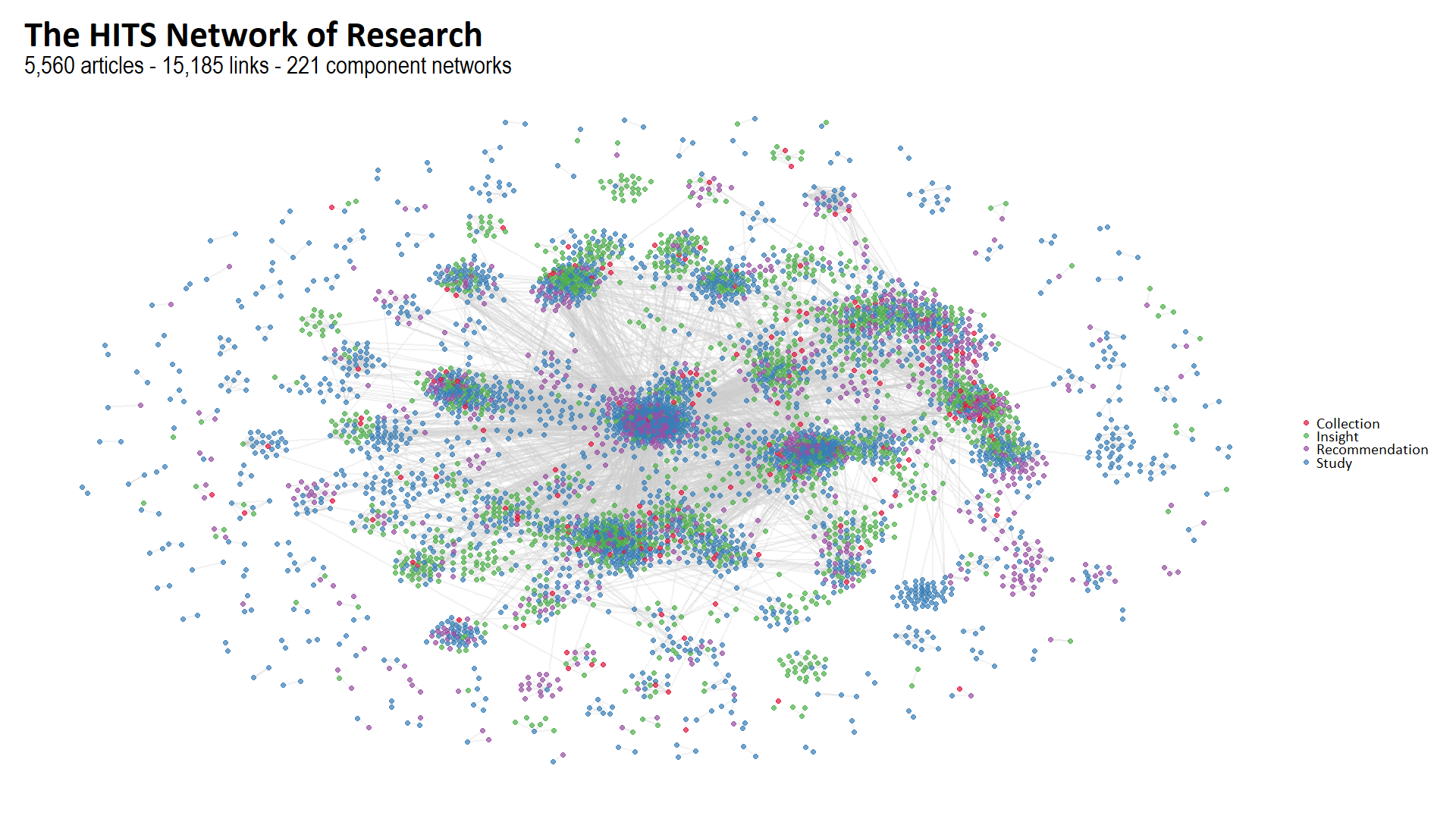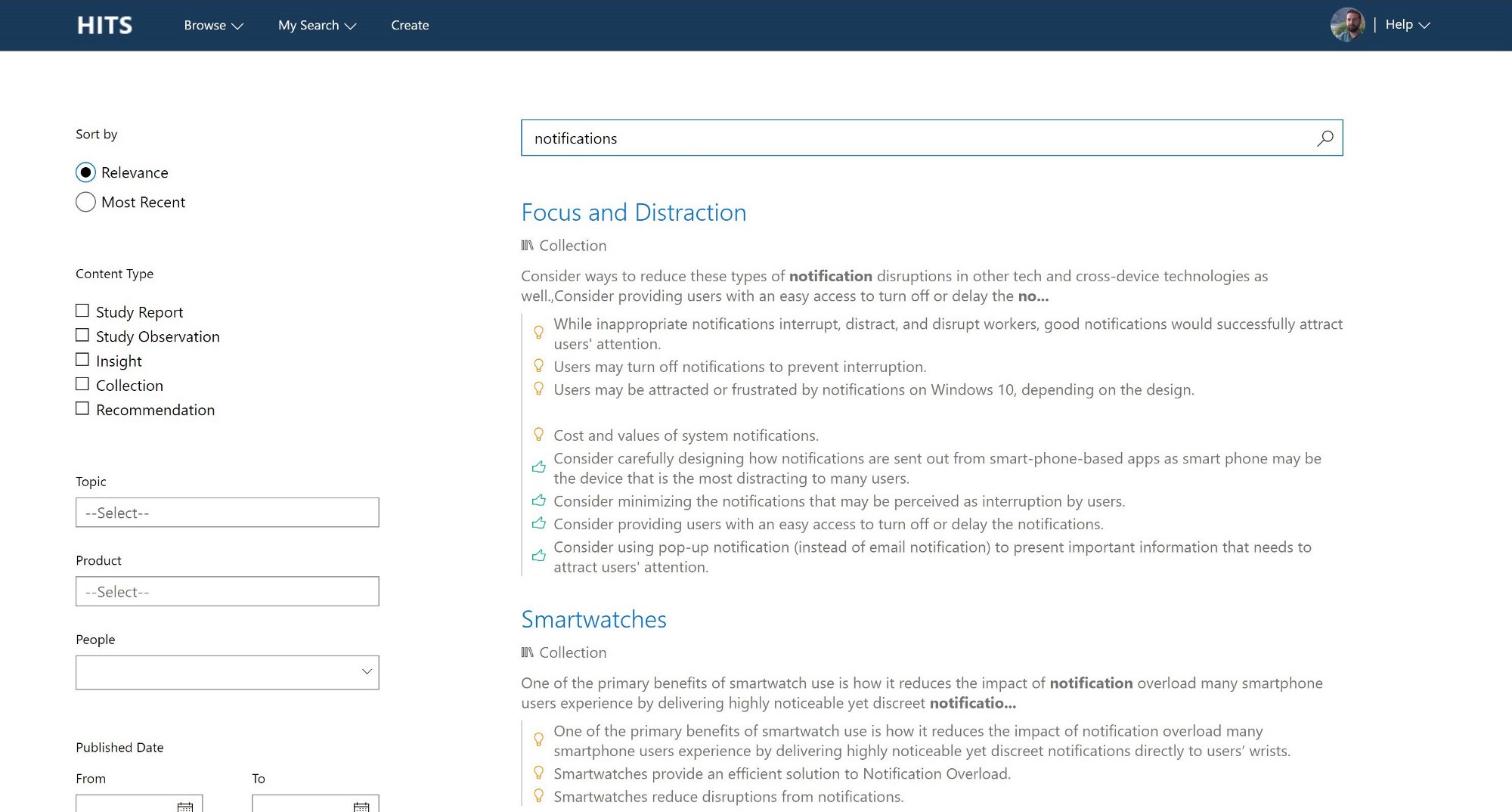By Matt Dunigan (opens in new tab)

Note: This article was originally published on June 18, 2019
Imagine a workplace where every research request you receive takes into account what your organization already knows. Product teams have the answers to common UX questions at their fingertips, and finding insights has become second nature to everyone. You rarely wonder whether the insights you find are still true because other researchers are always adding new evidence that supports them.
We only need two things to bring about this reality: a library that traces connections between individual insights and a culture that supports its use. These take an up-front investment to attain, but they’re worth the effort, as I’ve seen firsthand at Microsoft.
A library designed to activate research
I lead the team that manages our in-house research library, the Human Insights System (HITS). HITS is a network of connected evidence and insight that research and data science teams across the company author and curate. When you visualize its underlying structure, here’s what that network looks like today.

The nodes represent individual insights, recommendations, study reports, and curated collections of high-level knowledge based on user research. The connections between nodes represent references researchers and data scientists have made as they use the system, linking insights and the evidence that supports them. Over time, these references build upon each other, making our research more durable and timeless.
We’ve designed our library to let people find insights while retaining context, so we can scale HITS across a large company without losing our content’s integrity. When someone pulls up an insight through a search, they can see how much evidence supports it and trace that insight back to its source. If a user were to take an insight out of context, say to make an argument in favor of a new product feature, HITS makes it possible for everyone involved to look at the supporting evidence and come to a fuller understanding of what the context implies.
Our library’s design sets us up to bring research into discussions like these, to make customer data our common touchstone.
How HITS supports real-time curation and encourages participation
In order to turn a research library into a truly living body of knowledge, you need strong participation from both researchers and product teams. On the research side, curation often presents the highest barrier to participation. Someone needs to synthesize insights in a way that optimizes for durability and reuse across time. But for researchers under pressure, it can be tempting to defer this work.
A solution that’s proved successful for us is “real-time curation,” or integrating curation into the daily research practice, and providing tools to support this. Let’s say a researcher is working to help a product promote focus and minimize distraction. She creates hypotheses based on her early observations and enters them into the library while conducting her study. As her work in this area continues, HITS will track the number of connections that studies make to these hypotheses, and she’ll upgrade some of her hypotheses to full-fledged insights because of their strong supporting evidence.
Rather than an arduous final step, curation becomes a natural part of an iterative process.
We’ve seen that real-time curation is achievable, and the results save all of us so much time. When a product manager asks me whether a push notification in a given circumstance will be too distracting, for example, I can run a search, pull up the most relevant insights on focus and distraction, and send them the link, accomplishing what might have been several days’ work—or even a whole redundant study—in a few minutes. Better yet, PMs and designers can learn to do this themselves.

Fostering a culture of engagement within and beyond the research community
New teams of researchers, data scientists, and accessibility experts are joining HITS all the time, and we’re seeing a steady growth of unique visitors who search the library. Still, it’s not easy to change culture in a company as big as Microsoft. It’s taken five years to get where we are today, and we’re continually working to get more people engaged.
One challenge is that when authors curate timeless knowledge, much of the value is delayed in time and experienced by others. That’s why we continue to explore capabilities that can realize more short-term value directly to authors, such as features that help track and drive their insights from research into product decisions.
Solving for people’s short-term needs is important, but we’ve also started to see that longer-term value play out. I’ve heard excitement in the voices of PMs who talk about how they can build on the deep UX knowledge of others. I’ve seen it in the faces of researchers who realize the amount of work they just leapfrogged by running a simple search. I’ve felt it when I realize I’m harnessing the collective knowledge of hundreds of researchers, past and present—and when I see how the connections we’ve forged are helping all of us gain ground.
Is your organization working on a research library? Tweet me your thoughts @FourthMode and my team @MicrosoftRI or like us on Facebook (opens in new tab) and join the conversation.
Matt Dunnigan leads a team of designers, researchers, developers, and content managers. He oversaw the creation of the Human Insights System (HITS) for Microsoft, a knowledge management system for user research, market, and data science insights for human-centered product design. To learn more about the story of HITS, listen to this interview (opens in new tab) with Dunnigan and Louis Rosenfield.

